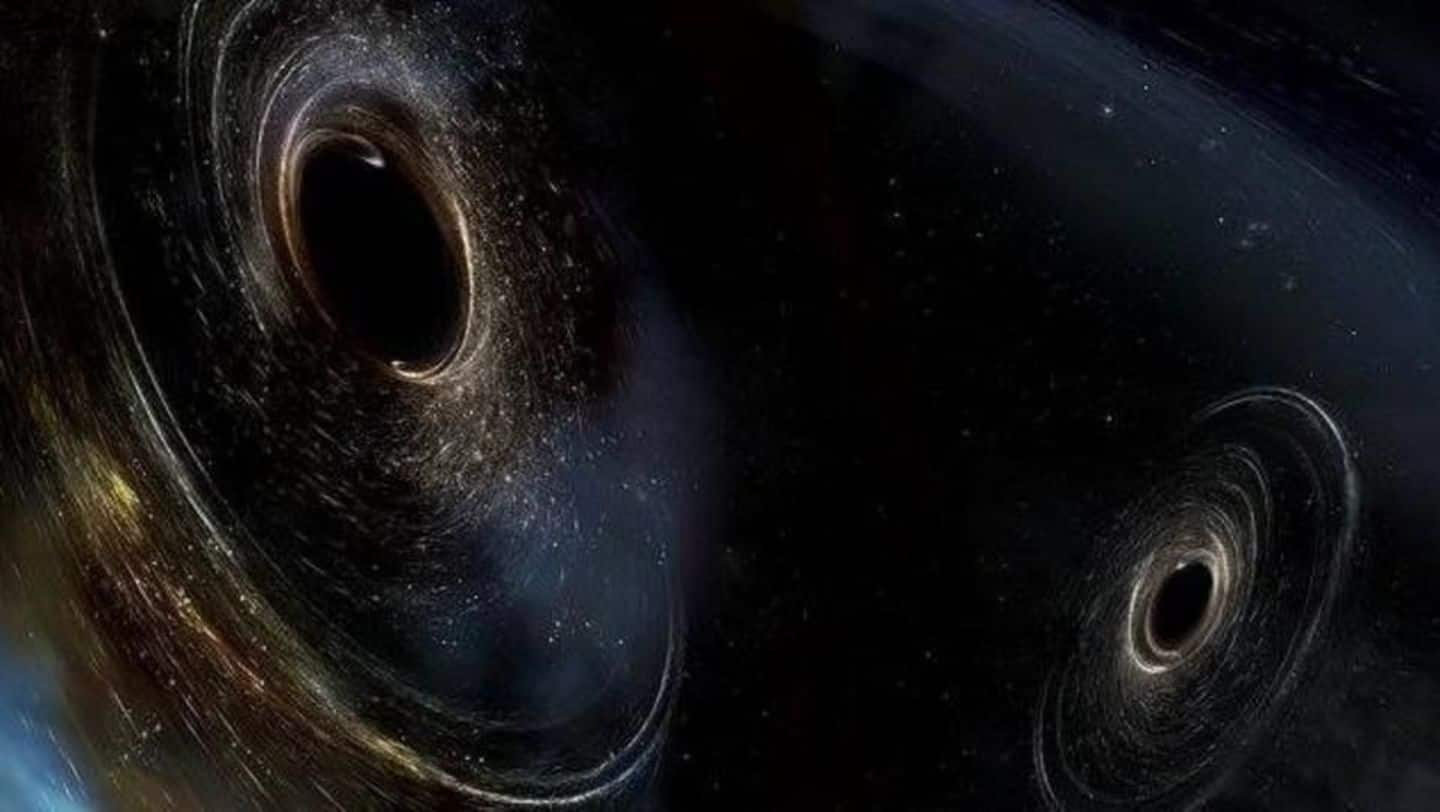
Scientists detect fourth gravitational wave from black hole collision
What's the story
Scientists have successfully detected signals of gravitational waves -ripples in the fabric of space and time- for the fourth time from the collision of two black holes.
The observation was jointly made by two US-based Laser Interferometer Gravitational-wave Observatories (LIGO) and Italy's Virgo Observatory on 14 August.
LIGO scientists announced they detected gravitational wave signals from "yet another merging black hole pair."
Know more!
Detections
Huge contribution to the gravitational wave science
According to the researchers, including several Indians, the detection has contributed significantly to the gravitational wave science field.
LIGO first detected gravitational wave signals from the merger of black holes in Sep'15; its second and third detections came in Dec'15 and Jan'17.
The latest and fourth detection (on 14 August) was the first, which was confirmed by a third, non-LIGO observatory.
Quote
This is just the beginning: Astrophysicist David Shoemaker
LIGO Scientific Collaboration spokesperson, David Shoemaker of MIT, stated: "This is just the beginning of observations with the network, enabled by Virgo and LIGO working together. With the next observing run planned for fall 2018, we can expect such detections weekly or even more often."
Black Holes
Latest detection results presented in journal Physical Review Letters
The latest gravitational waves were detected from two massive black holes, which are over 1.7 billion light-years away from the Earth.
The signals were produced when the black holes - weighing 31 and 25 times the Sun's mass, respectively - collided.
The scientists said an energy equivalent to the mass of three Suns was "radiated as gravitational waves" in the "energetic astronomical event".
Einstein's Theory
Gravitational waves existed only in Einstein's theory until 2015
Until LIGO first detected gravitational waves in 2015, such waves existed only in Einstein's theory of general relativity, which was proposed in the early 1990s.
His theory combined space and time (space-time) and proposed that all objects, from humans to celestial bodies, warp space-time around them. These objects create ripples in space-time when they move.
LIGO's detections enabled new tests of Einstein's theory.
Indian Contribution
The LIGO-Virgo collaboration's Indian team made direct contributions: LIGO
There are over 1,000 scientists in the LIGO-Virgo collaboration; the latest publication includes 40 authors from 13 Indian institutions.
LIGO said over the past 30 years, Indian researchers have done foundational work in the field like theoretical calculation of astronomical sources' expected signals and developing sophisticated data-analysis techniques.
The current Indian team contributed to extraction of astronomical source properties, and tests of Einstein's theory.
Quote
LIGO Observatory in India
LIGO stated: "The Indian contribution to this emerging frontier will grow significantly in the future, with the materialization of the LIGO-India observatory, which is being built on Indian soil (Maharashtra). This is expected to bring manifold improvements to the source localization accuracy."